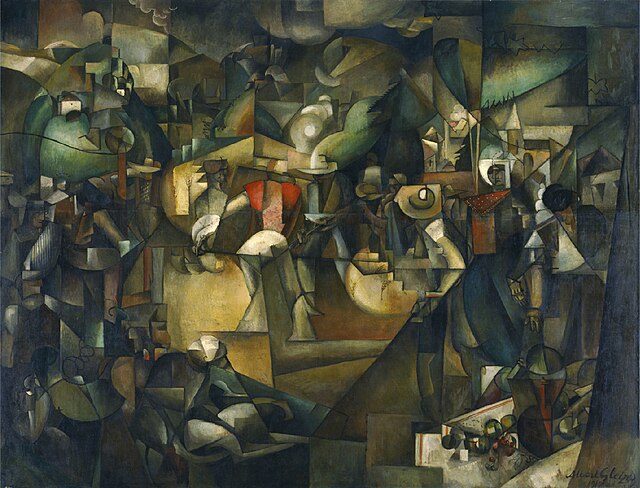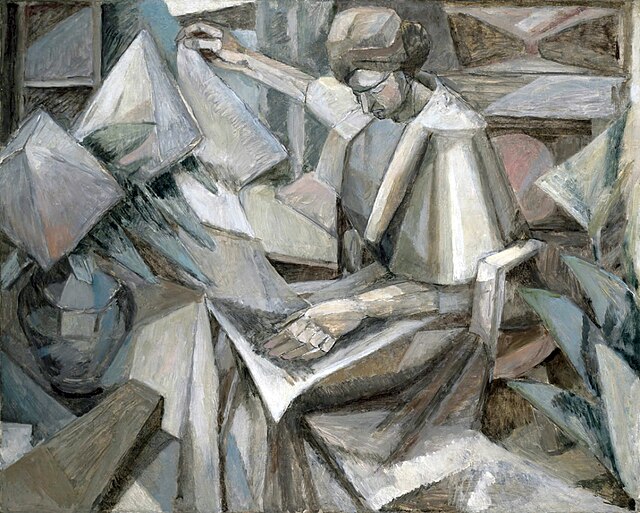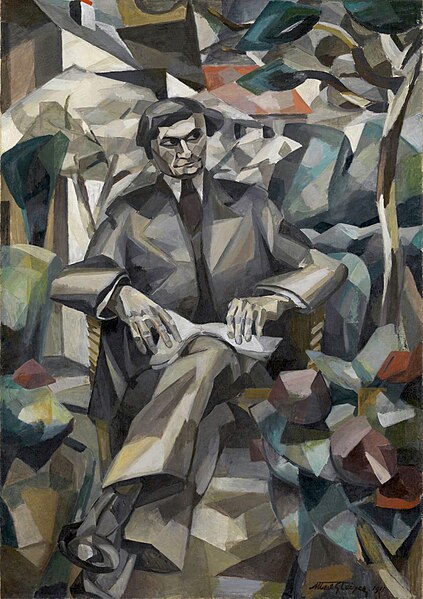Le Dépiquage des Moissons, also known as Harvest Threshing, and The Harvesters, is an immense oil painting created in 1912 by the French artist, theorist and writer Albert Gleizes (1881–1953). It was first revealed to the general public at the Salon de la Section d'Or, Galerie La Boétie in Paris, October 1912. This work, along with La Ville de Paris by Robert Delaunay, is the largest and most ambitious Cubist painting undertaken during the pre-War Cubist period. Formerly in the collection of the Solomon R. Guggenheim Museum in New York, this monumental painting by Gleizes is exhibited at the National Museum of Western Art, in Tokyo, Japan.
Harvest Threshing
Panorama Meudon, Issy-les-Moulineaux and Paris, View from Terrasse de Meudon, early 20th-century postcard
La Moisson, C.L.C, early 20th-century postcard
Longwy Bas. Vue générale, (Longwy à Longuyon, usines, 1904), postcard
Albert Gleizes was a French artist, theoretician, philosopher, a self-proclaimed founder of Cubism and an influence on the School of Paris. Albert Gleizes and Jean Metzinger wrote the first major treatise on Cubism, Du "Cubisme", 1912. Gleizes was a founding member of the Section d'Or group of artists. He was also a member of Der Sturm, and his many theoretical writings were originally most appreciated in Germany, where especially at the Bauhaus his ideas were given thoughtful consideration. Gleizes spent four crucial years in New York, and played an important role in making America aware of modern art. He was a member of the Society of Independent Artists, founder of the Ernest-Renan Association, and both a founder and participant in the Abbaye de Créteil. Gleizes exhibited regularly at Léonce Rosenberg's Galerie de l’Effort Moderne in Paris; he was also a founder, organizer and director of Abstraction-Création. From the mid-1920s to the late 1930s much of his energy went into writing, e.g., La Peinture et ses lois, Vers une conscience plastique: La Forme et l’histoire and Homocentrisme.

Albert Gleizes, c. 1920
Albert Gleizes, 1909, Bords de la Marne, oil on canvas, 54 x 65 cm, Musée des Beaux Arts de Lyon
Albert Gleizes, 1910, La Femme aux Phlox (Woman with Phlox), oil on canvas, 81 x 100 cm, exhibited Armory Show, New York, 1913, Museum of Fine Arts, Houston
Albert Gleizes, 1911, Portrait de Jacques Nayral, oil on canvas, 161.9 x 114 cm, Tate Modern, London. This painting was reproduced in Fantasio: published 15 October 1911, for the occasion of the Salon d'Automne where it was exhibited the same year.








